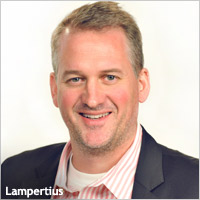
Contrary to its namesake, Interpublic’s Momentum unit is asking its clients to put the brakes on some of their digital
media acceleration. Armed with some surprising new research indicating that real-world media experience still beat digital in one key part of their marketing mix -- product sampling -- the agency is
calling on its clients to rethink how they are utilizing digital sampling programs.
“In a world where everything seems to be going digital, we’re saying, wait a
second, let’s think about this,” explains Joe Lampertius, senior vice president-shopper marketing at Momentum, a unit division of Interpublic’s McCann Worldwide unit, that likes to
use the expression “phygital” -- a hybrid of physical and digital media -- to characterize its approach to the media marketplace.
“Brand managers are
starting to move a lot of brand dollars completely to digital media, especially when it comes to sampling efforts,” Lampertius continues, adding: “Obviously, we will do what is right for
our clients’ businesses, but our concern was that we had a hunch that, ‘wait a second, there’s still a lot of value to where people attend an event, and the brand shows up to amplify
the effect with sampling.’ So we went out and did a study, and it turns out our hunch was right.”
With its client rushing to embrace seemingly cost-efficient
digital sampling platforms, Lampertius oversaw a study of more than 1,000 U.S. adults to find out exactly how effective they were vs. traditional sampling programs tied to physical events.
The result: In every one of the four key factors the agency uses to assess the performance of product sampling programs -- trial, repeat purchases, “subsidization,” and
“shareability” -- real-world sampling beat digital by a wide margin.
Specifically, the agency found that in the first, and perhaps most obvious, goal of sampling
-- getting people to actually try the product -- the real-world beats digital sampling programs by “more than 400%,” Lampertius said, citing results of 21% for physical vs. 5% for digital
sampling.
“Based on one attribute alone, trial, it was pretty big,” Lampertius notes, adding that the behavior “makes sense” when you consider that
physical sampling in the presence of the brand at a real-world event likely creates some kind of “halo effect” or “positive brand transference,” whereas digital sampling
detaches the consumer from the brand experience and reduces it to a “financial transaction.”
In terms of repeat purchases generated from those initial sampling
experiences, physical beats digital by a margin of two to one: 6% vs. 3%. Once again, Lampertius attributes these higher results to the positive “brand association” from having sampled the
product initially in connection with the brand vs. detached in a digital exchange.
On the third criteria, subsidization -- a term that shopper marketing executives use to
describe what happens when established brand users take advantage of free sampling or discount opportunities for brands they are already loyal buyers of -- Lampertius said results were even more
effective for physical sampling. He says event sampling generates 52% “new consumers” for a brand vs. digital sampling, which only delivers 15% new consumers.
In
terms of the last criteria -- shareability, a term used to describe what happens when consumers spread the word to others about a new brand they have sampled -- Lampertius says the results are also a
compelling win for the physical world, noting “34% of event samplers vs. 21% of digital samplers shared their experience.”
This last criterion is especially
important from a long-term branding point of view, he says, because when consumers share their brand experience with others they are helping to “co-create” the brand’s marketing
message vs. simply getting someone to try a brand.
Lampertius says Momentum isn’t recommending that its clients stop utilizing digital sampling altogether, but that
they slow their shift to digital down and “take a balanced approach.”
Over time, he says, digital sampling experiences are likely to change as mobile media and
other technologies begin to blur the line between the physical and digital worlds even more. But for now at least, he says, physical sampling still offers some things -- actual proximity to a brand
and in an place and during an experience the consumer has actually sought out -- that digital sampling programs largely cannot yet replicate.
